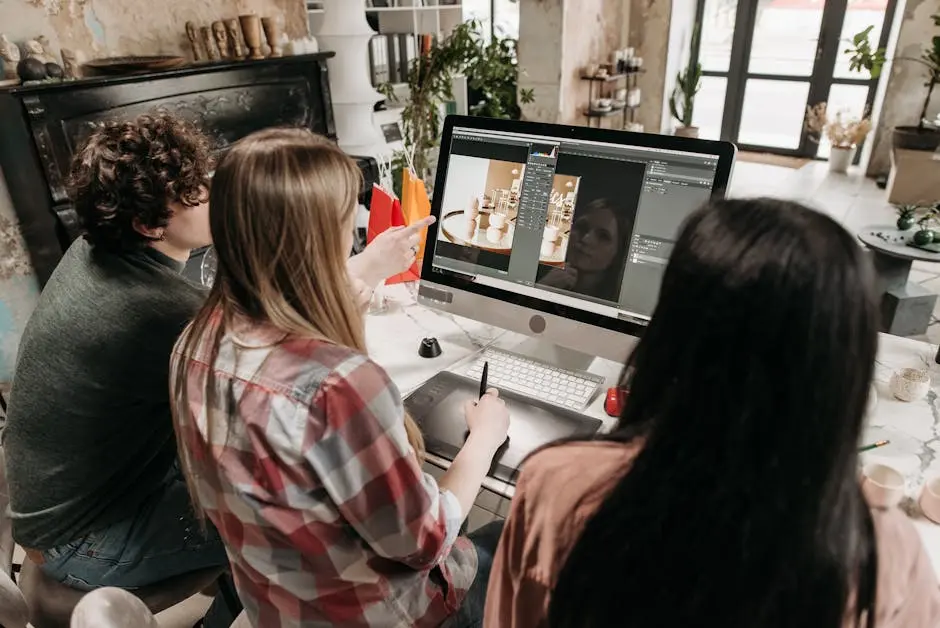Effortless Tips on How to Manage Freelance Design Projects

Managing freelance design projects can seem daunting, but with the right approach, it can be both rewarding and efficient. Whether you're juggling multiple clients or a significant project, having a strategy can help streamline the process. Here are some effortless tips to help you manage your freelance design projects more effectively.
Understanding the Scope of Your Project
Before diving into any project, it's crucial to fully understand the scope. Define the project requirements, deadlines, and expectations with your client. A clear understanding at the outset can prevent misunderstandings later on.
To ensure complete comprehension, take time during initial meetings to ask detailed questions about the client's vision and goals. Clarifying questions can often open up discussions around potential challenges that might not have been apparent initially. This proactive approach saves you from last-minute surprises and allows you to plan your resources effectively. Moreover, using collaborative tools like shared documents can facilitate a seamless exchange of ideas and feedback, keeping everyone aligned from start to finish.
Creating a Detailed Timeline
A timeline is your roadmap to project completion. Break down the project into smaller, manageable tasks, and assign deadlines to each. This not only helps you stay on track but also keeps the client informed of progress.
Effective timelines often incorporate buffer times for unforeseen delays. It's important to discuss and agree on these with your client to ensure everyone is on the same page. Furthermore, integrating Gantt charts can provide a visual representation of the project timeline, highlighting dependencies and critical paths. This approach allows for easy adjustments and reassures clients of your capability in handling complex projects.
Maintaining Clear Communication
Frequent communication is key. Update your client regularly and be open to their feedback. Using tools like email, project management software, or video calls can help maintain transparency and build trust with your clients.
One of the most effective ways to handle communication is through regular status reports. These reports provide a concise summary of what has been accomplished and what's next on the agenda. Scheduling regular check-ins can also help address any issues before they escalate. Opt for platforms that offer integrated messaging and video conferencing to keep all communications within a single ecosystem, reducing the chance of miscommunication.
Remember, good communication goes beyond just reporting. Listening actively and responding empathetically are essential skills in client interactions. Encouraging feedback and welcoming suggestions can transform a standard project into a collaborative success, improving both client satisfaction and the quality of the final output.
Utilizing Effective Project Management Tools
Leverage technology to enhance your productivity. Tools like Trello, Asana, or Monday.com can optimize your workflow and keep all your tasks organized in one place.
Selecting the right tool depends on the nature and scale of your project. Tools such as Asana offer robust features for managing tasks, setting priorities, and tracking progress. If your project involves creative collaboration, tools with integrated design feedback capabilities, like Figma, might lead to more seamless interactions. Evaluating the features and trial options can help you find a tool that best fits your project's needs.
Setting Boundaries and Managing Your Time
As a freelancer, it's important to set boundaries with clients regarding your availability and work hours. Efficient time management helps maintain a healthy work-life balance and increases your overall productivity.
Setting boundaries isn't just about limiting work hours; it's also about managing project scope. Being clear about your capacity and willingness to take on additional tasks protects your time and ensures you deliver quality results. Use time tracking software such as Toggl to gain insights into your work patterns and identify areas for improvement. This data can be critical in negotiating deadlines and managing client expectations.
Moreover, consider implementing productivity techniques such as the Pomodoro Technique or time blocking. These methods can enhance focus during work periods and ensure you allocate time efficiently across various tasks. Remember, the key to maintaining good client relationships and personal well-being is balance and clear communication.
Bringing It All Together for Project Success
Mastering the art of managing freelance design projects doesn't happen overnight, but with these tips, you're well on your way to a more organized and stress-free work life. By staying organized, setting clear boundaries, and leveraging the right tools, you can focus more on what you love—designing—while ensuring your projects run smoothly and your clients remain satisfied.
Roam: Run your design business, not just your projects. Intuitive business management tools for graphic designers.


.png)





